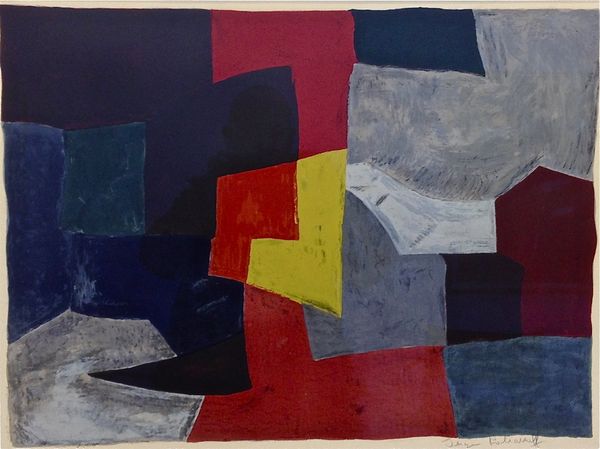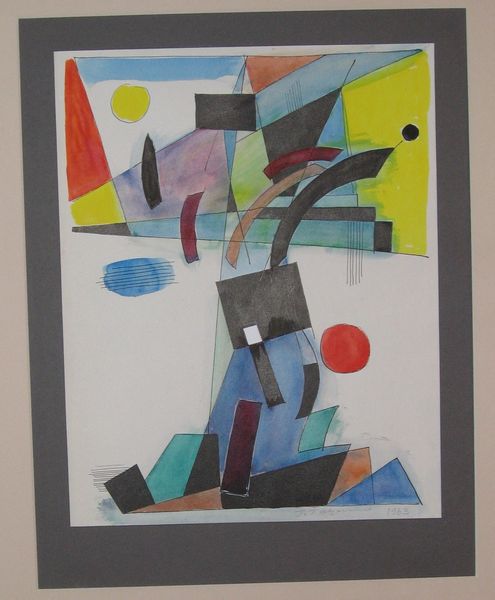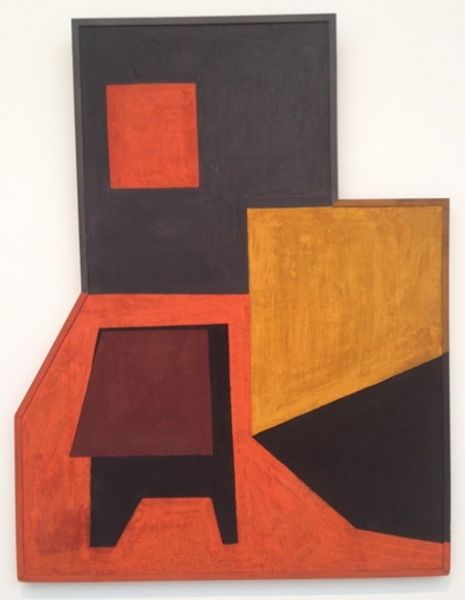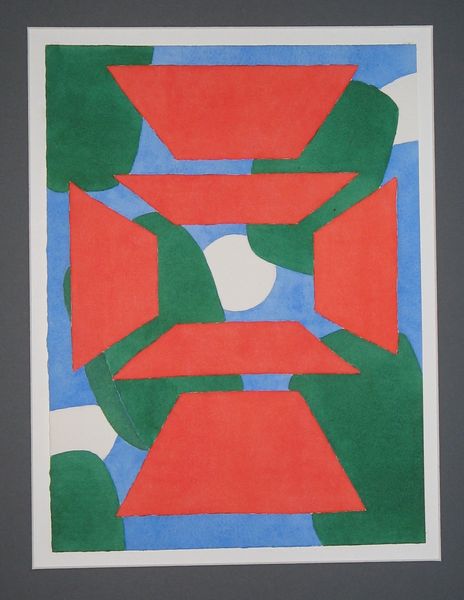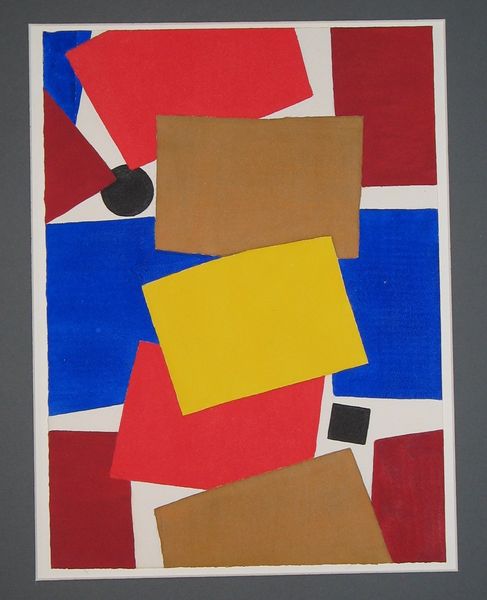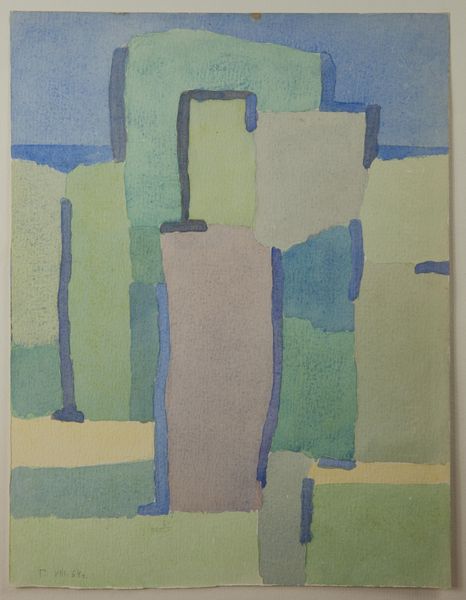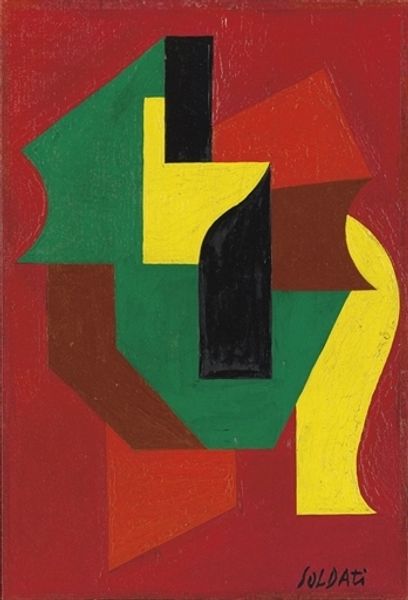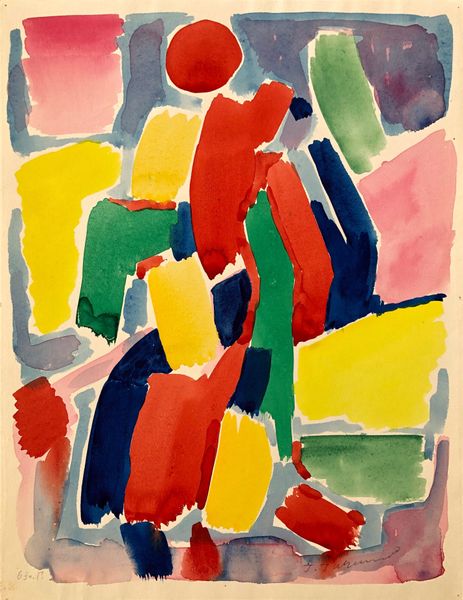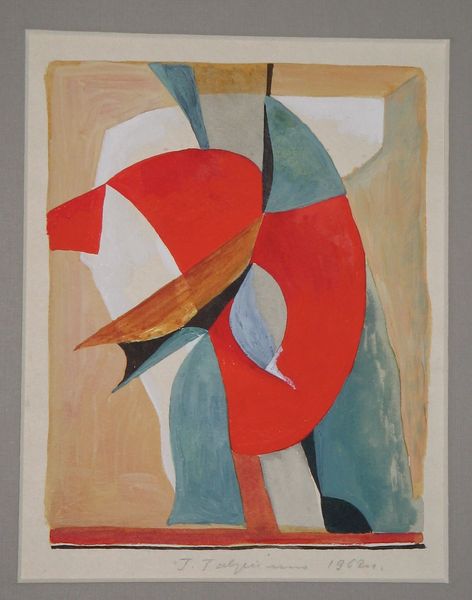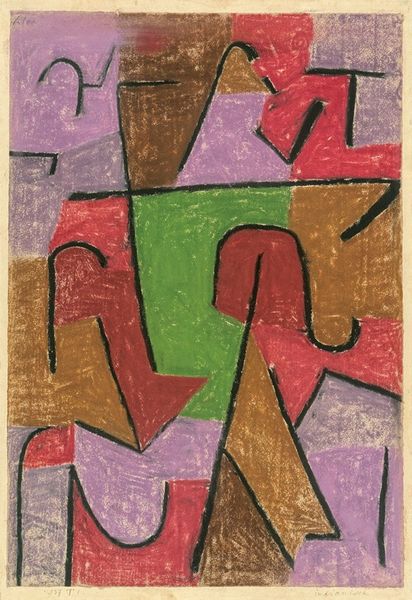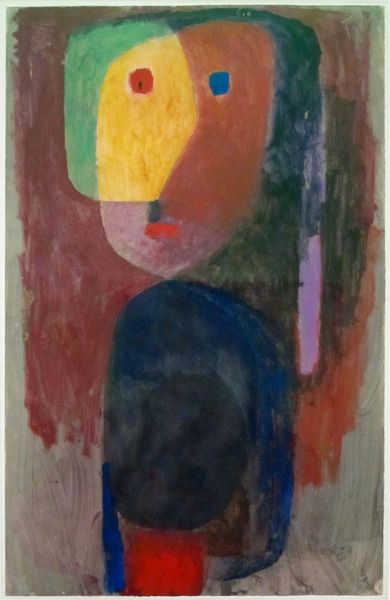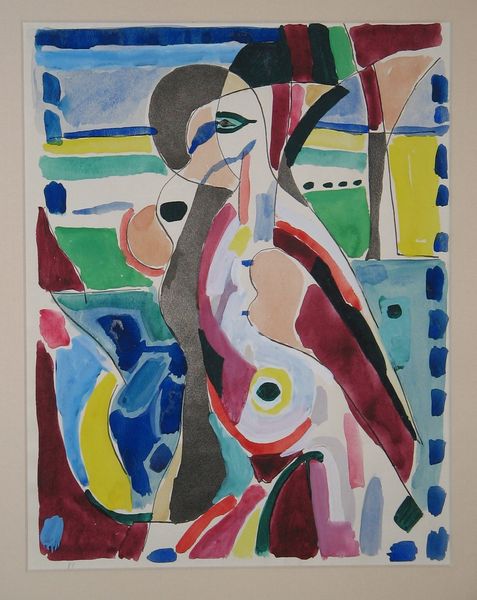
lithograph, print
#
abstract-expressionism
#
acrylic
#
lithograph
# print
#
geometric-abstraction
#
abstraction
Copyright: Serge Poliakoff,Fair Use
Curator: This striking work is entitled "XVI," a 1964 lithograph by Serge Poliakoff. Immediately, I am struck by its compelling interplay of geometric forms and muted, earthy tones. What's your first impression? Editor: Hmm, it feels like a city at twilight... like buildings silhouetted against the dusk sky. Though, a rather wonky, delightfully off-kilter city dreamed up in blues, reds, and ochres! There is an almost somber mood at play here, with the depth of the shades. Curator: The piece does have a strong sense of structure. Poliakoff was working within the Abstract Expressionist movement, of course, and there's definitely a shared exploration of pure form, line, and color, divorced from direct representation, in the work. This particular abstraction resonates with the political anxieties of the 1960s. Can we understand these simple forms as symbols of conflict? Or resistance? Editor: I hadn't really been focusing on the symbolism, truth be told. But I wonder whether this wasn’t necessarily Poliakoff's aim at all! I can easily imagine that these forms represent simple aesthetic experiments and ideas. There is joy in playing around with geometrical space here, a curiosity toward the emotive response provoked by distinct color configurations! I get a feeling, like "if only this, moved closer to this, could there emerge an ideal visual narrative of pure tones!" Curator: That is fascinating! Looking at his biography and historical context surrounding this print, there is a movement from pure form towards more concrete social and political expression. To separate the two as conflicting pursuits, instead of two sides of the same intellectual exercise may obfuscate much of his message. He used geometry to talk about a fractured world, to express a feeling, even if hidden! Editor: Perhaps so. Either way, there's a powerful sense of balance, even with the asymmetry of it all. As though even something seemingly chaotic like this piece is held together. Perhaps, indeed, this speaks to some collective and subconscious effort towards visual cohesiveness. It does feel almost primordial and necessary somehow. Curator: Absolutely, its place within the Abstractionist canon cannot be ignored! Thanks to modernism, forms like these gained symbolic weight! Well, this has certainly given me something new to ponder! Thank you. Editor: It was my pleasure, as always. This print invites all sorts of readings and feelings.
Comments
No comments
Be the first to comment and join the conversation on the ultimate creative platform.
